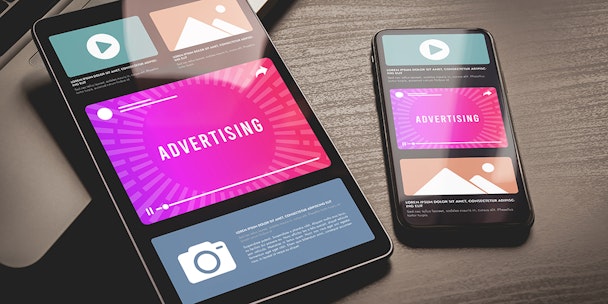Addressing mobile advertising’s power imbalance in APAC
There may be a power imbalance in mobile programmatic advertising – but new developments are helping drive greater transparency, control and fairness.

Mobile and in-app advertising marketing is continuing to flourish, especially among publishers and ad tech companies in APAC / adobe Stock
In the digital advertising landscape, publishers face multiple challenges in their pursuit of profitability, including walled gardens – closed ecosystems controlled by a few tech players that limit access to content and user data. While offering benefits like audience targeting and simplified ad management, walled gardens also have drawbacks.
A major disadvantage is the lack of transparency in monetizing publishers’ inventories, creating a power imbalance and limiting visibility into ad placement and pricing algorithms. The absence of consensus on earnings calculation also prevents publishers from measuring and verifying performance, leading to unfair practices and an erosion of trust between publishers and platforms.
Publishers also have limited control over their monetization stack, rarely able to choose advertisers or self-manage traffic optimization and allocation. Often, they also have little control over the ad creatives displayed in their apps. These lead to inefficiencies, missed revenue opportunities, and a negative user experience due to poor ad relevance and quality.
Advertisement
Finally, the hybrid waterfall model used in these enclosed ecosystems often generate a lot of load due to the integration of multiple software development kits (SDKs) and the need for client-side updates. Having multiple SDKs can result in a significant increase in app package sizes, leading to slower app performance.
Meanwhile, making client-side changes is a time-consuming task that demands developers to upload new app updates on the Appstore or Playstore. These additional steps exacerbate user experience issues, while putting a strain on manpower and tech resources.
To address these challenges, Prebid.org brings together leading publishers and adtech companies, fostering an industry-led effort to deliver greater efficiency, fairness, and transparency in the adtech industry.
Prebid, which was launched in 2015, developed initially to provide an alternative to the traditional waterfall method by bringing conformity and simplicity to the advertising process through a free, open-source header bidding solution. Its ecosystem supports more than 300 demand partners, around 50 analytics providers, and thousands of websites.
This solution is designed for developers to optimize their monetization process and gain access to demand partners globally. Prebid claims that benefits for publishers include efficiencies and simplifying ad operations, together with brand safety features.
Advertisement
However, Prebid seems to suffer from a lack of adoption outside the US, especially in the APAC region, and relatively low support for mobile app developers and publishers. To address this, the company is now working with in-app and mobile web programmatic advertising specialist AlgoriX – a collaboration that Prebid president Mike Racic claims will “extend Prebid’s global reach and support publishers’ needs.”
The relationship is a reflection that the mobile and in-app advertising marketing is continuing to flourish but that education and awareness of header bidding could be higher, especially among publishers and ad tech companies in the APAC region.
AlgoriX’s senior vice-president for revenue growth and strategy, Frederic Liow, argues that working together with Prebid will drive innovation and create more of a level playing field in programmatic advertising by promoting fair competition, adding that “ultimately, this collaboration will drive genuine revenue growth for developers.”
In specific terms, AlgoriX has built its SDK solution for developers on top of Prebid Mobile to support multiple ad formats, enabling efficiencies in terms of reduced internet bandwidth consumption. It will also introduce control settings for publishers that will help them to fine-tune the ad rendering experience with potentially less effort than is required currently.
Suggested newsletters for you
AlgoriX has worked already with partners interested in the solution, pre-testing Prebid solutions on a small scale. But what will this achieve in terms of the bigger picture for programmatic mobile advertising? The aim is to provide publishers with more control and transparency, while offering buyers fair competition for inventory.
Barriers to this include skepticism in new markets towards alternatives to the waterfall model. Changing these perceptions will be vital in shaping the future fortunes of header bidding and Prebid itself, as well as helping clients stay ahead in programmatic advertising.
Prebid is hosting its first global summit in New York City on October 23, 2023 to highlight the latest developments in header bidding technology. To learn more about joining its global taskforce, connect with Prebid here.
Content created with:

Algorix
AlgoriX is an independent global media and technology company offering best-in-class technology solutions and know-how to deliver results.
Find out more